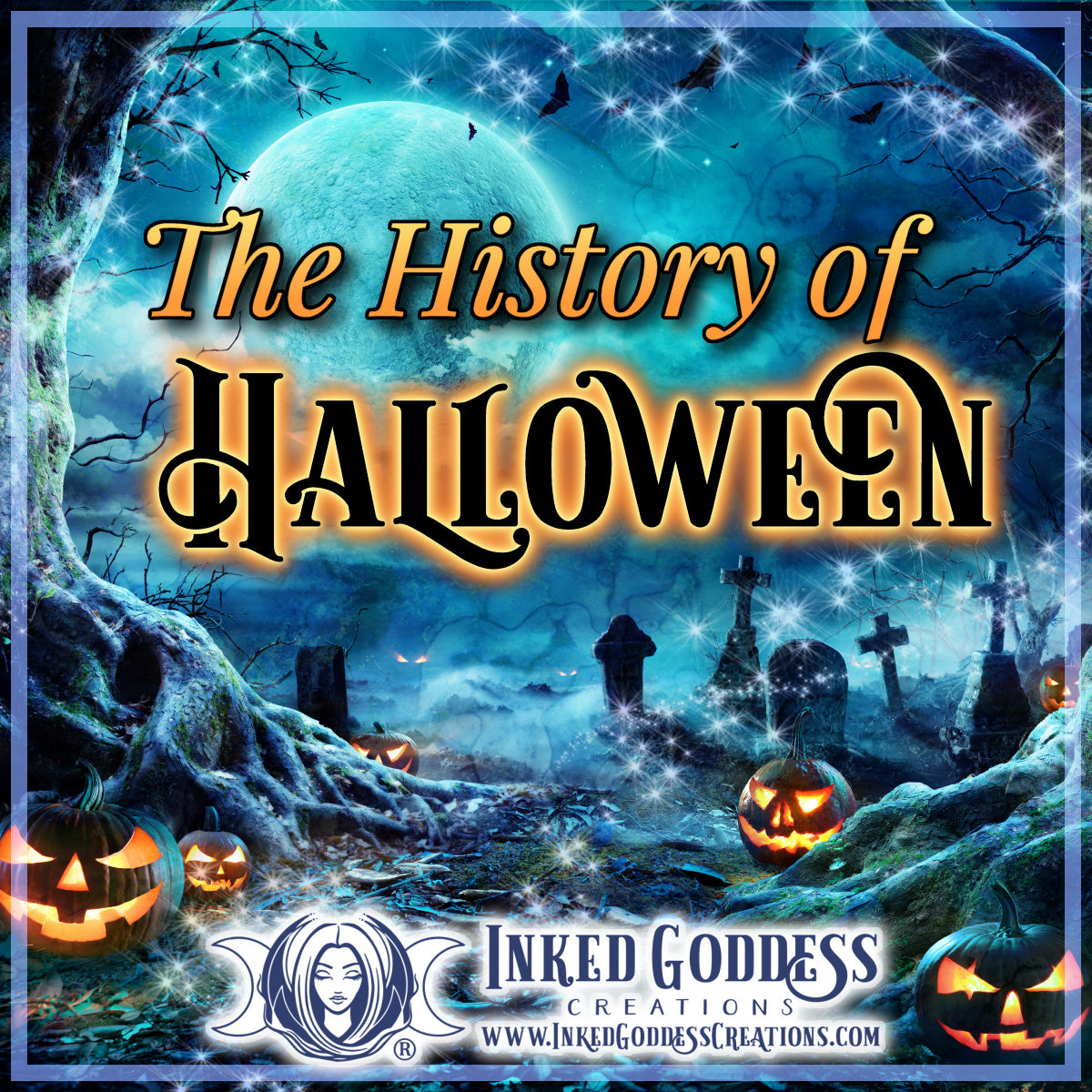
The History of Halloween
Like many mainstream holidays, Halloween is the product of a pagan celebration that the Catholic Church overtook. It has since evolved into one of the largest celebrations in the US, where a quarter of all the candy sold throughout the year is purchased for Halloween. That’s a lot of sugar! Let’s dive into Halloween, its origins in Samhain, and how we came to celebrate this holiday.

Samhain
Before I go any further, let’s talk about pronunciation. No shame here; Samhain is one of those tricky Gaelic terms. It means “summer’s end” and is pronounced “sow-in.” Now that that’s out of the way, Samhain takes place on October 31st. Its origins can be traced back 2,000 years to the Celtic Great Fire Festival that marked the end of the summer and the beginning of winter. It also marked a new year in the Celtic calendar (it’s affectionately called the Witch’s New Year) and was adopted as the first festival of the Wheel of the Year.
Samhain is a time when the veil between the worlds is thin, so it was common to honor ancestors during Samhain fire celebrations, as well as have deities come over from the spiritual realm to partake in the celebration. Divination is also heavily practiced at Samhain, with a focus on what the upcoming year holds.
The Thin Veil
What do we mean by a thinning veil? As Samhain approaches, the divider between our realm and the supernatural, spiritual, and fairy realms grows smaller. The “veil” between the worlds grows thinner. During this time, it’s easier to contact other realms, be contacted by other realms, send and receive messages, and catch glimpses of happenings on the other side.
Ways to “Pierce the Veil”
Ready to make contact with other realms? Here are a few ways to do it. Just make sure to ground and protect yourself before you start.
- Séance
- Spirit board communication
- Mediation
- Astral travel
- Look through the center of a Holey Stone to see into other realms
- Scry, preferably into a black mirror, black gemstone, or black bowl filled with water. Mirrors are often great portals during the thin veil time.
- Perform EVP sessions (Electronic Voice Phenomenon) by starting a voice recording device and asking questions to the spirit realm. Stop the recording and play it back with the volume turned up to see if you received any supernatural voices in the recording.
The Origins of Halloween
Now back to our original topic: Halloween. So how did Samhain and this thin veil time turn into a day of trick-or-treating and sexy nurse costumes? Well, I’ll leave that second part for you to figure out. As for the celebration itself, we can look back to the 9th century, when the Catholic Church declared November 1st “All Hallow’s Day,” so the day before became “All Hallow’s Evening,” which was shortened to Halloween. In fact, for quite some time, it was spelled Hallowe’en (Hallowe[v]en). As with many new Christian holy days, it coincided with a popular pagan festival…except we all know it wasn’t a coincidence. Moving on!
Many of the elements of Samhain trickled into the newly created holy day celebration. The thinned veil helps aid contact with deceased loved ones, but it also makes it easier for dark entities to torment the living. Wearing costumes on this night is a way to confuse wayward spirits by disguising yourself as one of them. This translated to Halloween celebrations, too, as did some other popular activities.
Bobbing for apples, for example, is a method of divination. The first to retrieve an apple will be the first one to marry.
Bonfires lit in celebration on this night were meant to bestow good luck for the coming winter. Trick-or-treating itself began when costumed revelers sought food in exchange for reciting a song or poem, and later as a guarantee that the home will not be the target of pranks: Give us a treat, or we’ll play a trick on you.
Jack O’ Lanterns
As for Jack O’ Lanterns, the practice of hollowing out gourds or tubers – including turnips – and placing a light source inside could be as old as the domestication of the plants themselves – about 10,000 years. Adding facial features turned these practical objects into magickal ones, warding away evil spirits ad guiding loved ones’ souls.
Have you ever heard the Tale of Stingy Jack? Here it is: Satan sought to reap Jack’s soul, but clever Jack found a way to trap Satan, only freeing him after he promised not to take Jack’s soul to Hell. When Jack died, he had been so wicked that he couldn’t go to Heaven, but he was also barred from Hell. Jack could only wander the earth. He was guided by a lump of glowing coal that Satan had given him dismissively, which Jack had placed inside a hollowed turnip to act as a lantern. And so we have Jack-of-the-Lantern, or Jack O’ Lantern.
Jack O’ Lanterns were first made a Halloween/Samhain tradition in the 19th century by the Irish, who carved turnips (pumpkins are originally from Mexico). Immigrants brought the custom to the United States, where it thrives today.
What’s one of your favorite ways to celebrate Samhain and/or Halloween?
